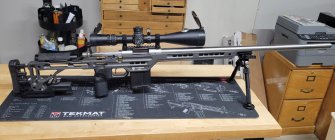garandman
Bolt Gun Bodacious
So its here.... pic below.
Specs:
Now... the "new journey" part.
This far, my current reloading routine:
I'm sure there's a dozen things wrong there, but its worked for me decently well....at least 0.3 - 0.5 moa, and occasionally even better.
My hope is to consistently beat 0.3 moa. The question is "How?"
What do I do next in improving my handloads? Or...say... what are the next 2 steps in improving my handloads?
Other tips/ tricks / wisdom / tech data re: 6 Dasher appreciated.
THanx.
Specs:
- Trued Rem 700 action that was a 6.5 CM I wasn't shooting alot, tho it was a 0.3 - 0.5 moa gun. Been wanting to get into 6mm
- 28" straight taper Douglas 7-twist barrell @Stan Taylor hooked me up. Quick turn too.
- Timney trigger. Can't remember pull weight prolly "heavy" ( 8oz) the way I like
- MPA chassis
- NSX 8 - 32 NF
- Lapua brass chamber
Now... the "new journey" part.
This far, my current reloading routine:
- For brass prep, size, wet tumble, trim case length (if needed) store to be reloaded
- Never worried about fire forming, neck turning, case sorting, primer seating depth etc
- shoot 5 rd groups @ 100 yd, increasing 0.2 gr at a time. Find a good node, test three times to be sure it repeats
- Test bullet seating depth, starting about 0.005 off the lands and working backwards at 0.003" increments, till I get my best group. Test depth again to make sure it repeats. Never tried "jamming" to the lands.
I'm sure there's a dozen things wrong there, but its worked for me decently well....at least 0.3 - 0.5 moa, and occasionally even better.
My hope is to consistently beat 0.3 moa. The question is "How?"
What do I do next in improving my handloads? Or...say... what are the next 2 steps in improving my handloads?
Other tips/ tricks / wisdom / tech data re: 6 Dasher appreciated.
THanx.











